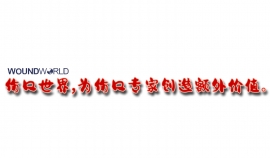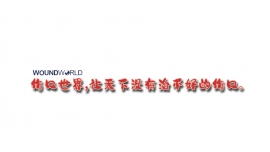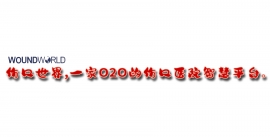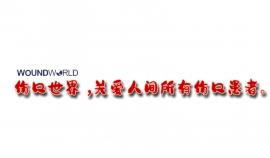文献精选
张鑫锋 1,2,3),张小丽 1,2,3),李孟丽 1,2,3),罗华友 1,2,3),舒 若 1,2,3),雷 毅 1,2,3)(1)昆明医科大学第一附属医院国家卫健委毒品依赖和戒治重点实验室;2)胃肠与疝外科;3)科研实验中心,云南 昆明 650032)
[摘要] 目的 探讨 Top Closure 皮肤牵拉闭合器联合富氧可调节负压辅助疗法治疗难治性创面的临床疗效。
方法 选取 2018 年 8 月至 2020 年 7 月昆明医科大学第一附属医院胃肠与疝外科收治的不同部位难治性创面患者 36 例,回顾性分析 Top Closure 皮肤牵拉闭合器与富氧可调节负压辅助疗法的治疗效果。结果 35 例患者经Top Closure 皮肤牵拉闭合器与富氧可调节负压辅助疗法治疗后,创面均愈合良好,无愈合不良或不愈合。1 例患者因为术后严重的心肺功能衰竭死亡。结论 Top Closure 皮肤持续牵张技术联合富氧可调节负压辅助疗法相对简单,大大降低了手术难度,术后伤口愈合良好,可应用于治疗难治性创面。
[关键词]
Top Closure 皮肤持续牵张技术; 富氧可调节负压辅助疗法; 难治性创面; 褥疮; 糖尿病足
[中图分类号] R64 [文献标志码] A [文章编号] 2095 − 610X(2021)07 − 0043 − 06
Top Closure Tension-relief System with Regulated Oxygenenriched Negative Pressure-assisted Wound Therapy for the Treatment of Refractory Wounds
ZHANG Xin-feng 1,2,3),ZHANG Xiao-li 1,2,3),LI Meng-li 1,2,3),LUO Hua-you 1,2,3),SHU Ruo 1,2,3),LEI Yi 1,2,3)(1) The NHC Key Laboratory of Drug Addiction Medicine; 2) Dept. of Gastrointestinal and Hernia Surgery; 3) The Scientific Research Laboratory Center,The 1st Affiliated Hospital of Kunming Medical University,Kunming Yunnan 650032,China)
[Abstract] Objective To investigate the clinical efficacy of Top Closure tension-relief system combined with regulated oxygen-enriched negative pressure-assisted wound therapy in the treatment of refractory wounds. Methods From August 2018 to July 2020,36 patients with refractory wounds at different sites were selected from the Department of Gastroenterology and hernia surgery,the First Affiliated Hospital of Kunming Medical University. We retrospectively analyzed the therapeutic effects of Top Closure tension-relief system combined with regulated oxygen-enriched negative pressure-assisted wound therapy. Results After 35 patients were treated with Top Closure skin traction occluder and oxygen-enriched adjustable negative pressure therapy,the wounds healed well and there was no malunion or nonunion. One patient died of severe cardiopulmonary failure after operation. Conclusion Top Closure tension-relief system combined with regulated oxygen-enriched negative pressureassisted wound therapy in the treatment of refractory wounds is relatively simple,it can greatly reduce the difficulty of operation,and make the wound heal well after operation,so it can be used to treat refractory wounds.
[Key words] Top Closure tension-relief system; Regulated oxygen-enriched negative pressure-assisted wound therapy;Refractory wounds;Pressure ulcer;Diabetic foot
[收稿日期] 2021 − 05 − 19
[基金项目] 国 家 自 然 科 学 基 金 资 助 项 目( 82060516);云 南 省 消 化 疾 病 防 治 工 程 技 术 研 究 中 心 基 金 资 助 项 目(2018DH006);云南省医疗卫生单位内设研究机构科研基金资助项目(2017NS001)
[作者简介] 张鑫锋(1996~),男,河北涿州人,医学硕士,住院医师,主要从事普通外科研究工作。
[通信作者] 雷毅,E-mail:该Email地址已收到反垃圾邮件插件保护。要显示它您需要在浏览器中启用JavaScript。
Nils Karl Josef Ecker1 · Mathias Tönsmann2 · Karl‑Wilhelm Ecker3,4,5
Accepted: 8 November 2022 / Published online: 21 November 2022
© The Author(s) 2022
Abstract
Purpose Comprehensive description of surgical techniques for revision of complications of continent ileostomy (CI).
Methods By analyzing 133 revision procedures performed over 30 years, a systematically classified approach to the appropriate techniques for CI revision surgery has been derived. Based on the anatomic site and severity of the respective complication, four classes of revision surgeries have been defined: class 1 refers to the nipple valve, class 2 to the pouch, class 3 to the stoma, and class 4 to the afferent loop. The severity of the complication or the complexity of the revision procedure is indicated by a subdivision from a to d.
Results The surgical variants (class 1a–d, class 2a–c, class 3a–b, and class 4a–b) are shown in schematic illustrations with accompanying descriptions of technical details, the respective fields of application, and the special indications.
Conclusion Based on these classes of revision surgeries, the specialized surgeon may find differentiated techniques at their disposal to save the CI and avoid unnecessary sacrifice of the artificial continence organ.
Keywords Nipple valve · Pouch fistula · Stoma complication · Crohn’s disease · Surgical repair · Technical details
Eylem Togluk Yi˘gito˘glu a,* , Semine Aydo˘gan b a Istanbul University-Cerrahpasa, Cerrahpasa Medical Faculty Hospital, Ostomy and Wound Care Unit, Istanbul, Turkey b Istanbul University-Cerrahpasa, Cerrahpasa Medical Faculty Hospital, Sadı Sun
˙In tensive Care Unit, Istanbul, Turkey
ARTICLE INFO
Keywords: COVID-19 ICU Medical device-related injury Pressure injury
ABSTRACT
Background: COVID-19 patients are at risk for the development of pressure injuries (PI).
Aim: The aim of this study was to determine the incidence of medical device-related pressure injury (MDRPI) in patients treated in the COVID-19 Intensive Care Unit (ICU)s.
Methods: The sample of the study consisted of 132 patients, and each with a maximum follow-up of 7 days. Data were collected in the COVID-19 ICU of a university hospital between January and May 2021 by using a Patient Characteristics Form, the MDRPI Follow-up Form, the Braden Pressure Ulcer Risk Assessment Scale, and the Pressure Ulcer Staging Form.
Results: Of the patients, 59.1% (n = 78) developed at least one MDRPI. MRDPI was observed in those with a mean age of 65.45 ± 2.462 years who were invasively ventilated (51.3%), enterally fed (46.2%), placed in the prone position (78.2%), and had a Braden score ≤12 (50%). The most common medical devices that caused MDRPIs included endotracheal tube (ET) (31.2% n = 44), non-invasive mechanical ventilation (NIVM) (23.4% n = 33), nasal high-flow (11.3% n = 16), nasogastric tube (10.6% n = 15), the ET connection (8.5% n = 12), respectively. The most common sites for pressure injuries were the nose (28.8% n = 34), mouth (25.8% n = 34), ear (12.9% n = 17), lip (9.1% n = 12), and cheek (8.3% n = 11). The most common gradings of MDRPIs were stage 2 (28.8% n = 38), stage 1 (19.7% n = 26), stage 3 (9.1% n = 12) mucous membrane injuries (12.9% n = 17) and suspected deep tissue injuries (9.1% n = 12), respectively. The time to PI was 3 days (25.7% n = 36).
Conclusions: MDRPI was common among COVID-19 patients. It was found that the most common cause of pressure injury was ventilators, and PI developed in the mouth and lip sites most frequently in patients in prone position, stage 2 and suspected deep tissue damage was the most common grade. It is important to evaluate the skin in contact with medical devices in COVID-19 patients and to take the necessary interventions to prevent PI.
Seongwoo Yang1,*, Ji Won Park2,*, Hyuk Hur3,5, Min Jung Kim2 , Seung-Yong Jeong2 , Kyounghoon Park1 , Ik Yong Kim4,5
1 HERINGS, The Institute of Advanced Clinical & Biomedical Research, Seoul; 2 Department of Surgery, Seoul National University College of Medicine, Seoul; 3 Department of Surgery, Yonsei University College of Medicine, Seoul; 4 Division of Colorectal Surgery, Department of Surgery, Yonsei University Wonju College of Medicine, Wonju; 5 Korean Wound and Ostomy Study Group of The Korean Society of Coloproctology, Seoul, Korea
Purpose: The use of an ostomy for urination and defecation leads to reduced quality of life. Although many ostomy management strategies are needed, such strategies are often implemented by patients. Thus, there is a need for a home health
care service platform that can be used in ostomy patient management.
Methods: We developed an ostomy patient management platform by identifying the needs of patients and medical staff through the Chronic Care Ostomy Self-Management Training Program in the United States and from studies conducted in Korea.
Results: The platform encompassed physical management, psychological management, maintenance of social function, spiritual stability, and home medical care. These components were implemented through monitoring, self-care guidance, and a community platform. For the monitoring function, a patient entered their health status in a mobile application (app); the medical staff at the affiliated hospital then monitored the stoma status through a web interface.
Conclusion: Our platform allows medical staff to monitor ostomy patients through a web interface and help such patients to fully manage their ostomy at home using an app. We expect that the continued development of patient-oriented functions in our app will allow ostomy patients to experience quality of life improvements.
Keywords: Ostomy; Home care services; Telehealth; Digital health platform; Telemedicine
Received: May 23, 2022 • Revised: Jul 12, 2022 • Accepted: Jul 18, 2022 Correspondence to: Kyounghoon Park, M.D., Ph.D. HERINGS, The Institute of Advanced Clinical & Biomedical Research, 560 Eonju-ro, Gangnam-gu, Seoul 06144, Korea
Tel: +82-2-6949-3516, Fax: +82-2-6949-3517
E-mail: 该Email地址已收到反垃圾邮件插件保护。要显示它您需要在浏览器中启用JavaScript。
ORCID: https://orcid.org/0000-0001-5800-917X Co-Correspondence to: Ik Yong Kim, M.D., Ph.D. Department of Surgery, Yonsei University Wonju College of Medicine, 20 Ilsan-ro, Wonju 26426, Korea
Tel: +82-33-741-0573, Fax: +82-33-741-0574
E-mail: 该Email地址已收到反垃圾邮件插件保护。要显示它您需要在浏览器中启用JavaScript。
ORCID: https://orcid.org/0000-0001-6375-2216
* Seongwoo Yang and Ji Won Park contributed equally to this work as co-first authors.
This study was presented at The Korean Society of Coloproctology the 55th Annual Meeting, held in Busan, Korea from April 8 to 10, 2022.
© 2022 The Korean Society of Coloproctology
This is an open-access article distributed under the terms of the Creative Commons Attribution NonCommercial License (https://creativecommons.org/licenses/by-nc/4.0) which permits unrestricted noncommercial use, distribution, and reproduction in any medium, provided the original work is properly cited.




